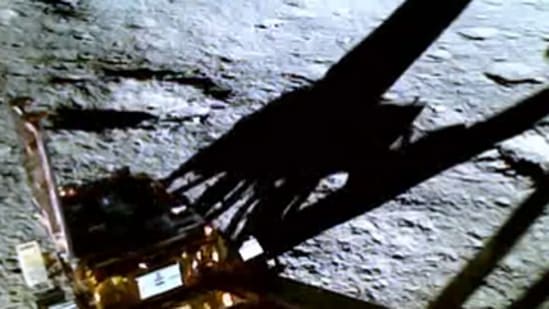Chandrayaan-3’s Lunar Landing Site ‘Shiv Shakti’ in a Historic Move

Prime Minister Narendra Modi made a significant announcement on August 26, declaring that the location on the lunar surface where the Chandrayaan-3 lander is set to touch down on August 30 will be christened “Shiv Shakti.” This revelation was made during his visit to the Indian Space Research Organisation (ISRO) headquarters in Bengaluru, where he met with the dedicated scientists responsible for the mission’s achievements.
Addressing the gathering, PM Modi noted, “In general, there has been a tradition across the world with such kinds of successful missions, to give a name to that point.” This move not only celebrates the remarkable achievement of Chandrayaan-3 but also resonates with the longstanding practice of assigning names to specific locations of significant scientific endeavors.
The naming process itself stems from the conviction that these milestones deserve recognition and commemoration. Even in the face of challenges, the Indian space agency’s resilience and determination have led to noteworthy achievements, deserving of acknowledgment and preservation.
PM Modi revealed that a similar deliberation had taken place after the Chandrayaan-2 mission’s setback in 2019, with discussions revolving around naming the site where the lander had encountered an anomaly during its landing attempt. However, the decision was deferred, and the moniker “Tiranga” was assigned to that particular location. The PM emphasized that this name would come into use only after a subsequent mission achieved a successful soft landing.
ISRO’s leader, K Somnath, also affirmed the significance of naming these landmarks, asserting, “The country has every right to name the landing site. The naming of the landing site is not the first incident. Several Indian names are already there on the Moon. We have a Sarabhai crater on the Moon. Other countries have also named places related to their scientific accomplishment. All places related to even minor experiments would be named. That is a tradition.”
The assertion that this naming tradition is not unique to India underscores the global appreciation for marking scientific achievements with memorable titles. The nod to Dr. Vikram Sarabhai, the visionary pioneer of India’s space program, is particularly noteworthy. The “Sarabhai crater” on the Moon stands as a testament to his groundbreaking contributions and enduring legacy.
The naming of locations connected to scientific accomplishments is rooted in the belief that these milestones transcend their immediate significance. They serve as a testament to human innovation, pushing the boundaries of exploration and knowledge. These names symbolize the relentless pursuit of discovery and inspire future generations to continue expanding the frontiers of human understanding.
As the world watches the advancements made by space agencies around the globe, naming these sites becomes a declaration of the nation’s scientific prowess and its capacity for innovation. Just as other nations have etched their achievements into the annals of history through such nomenclature, India too reinforces its presence on the cosmic map.
News Mania Desk / Agnibeena Ghosh 30th August 2023






